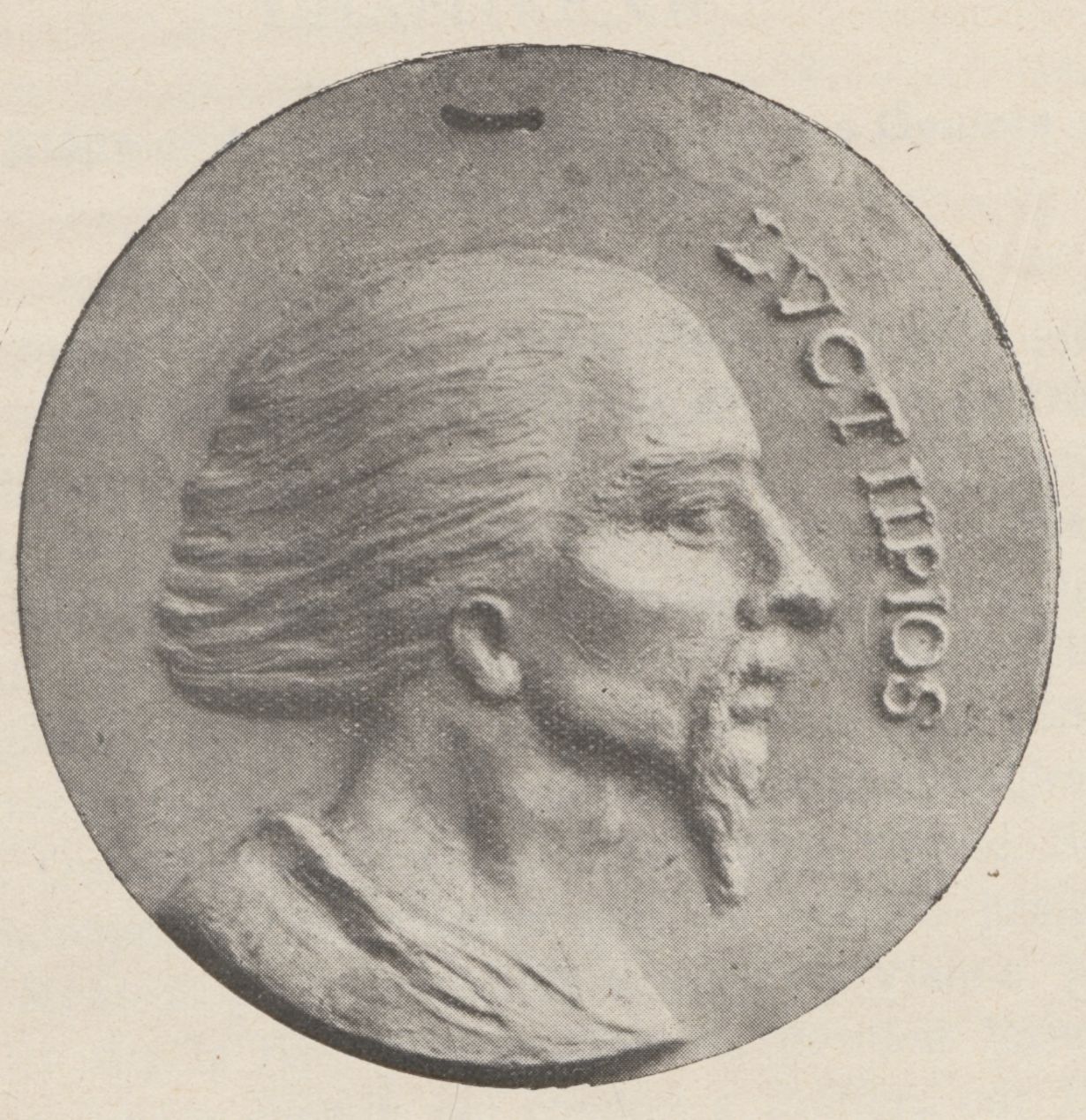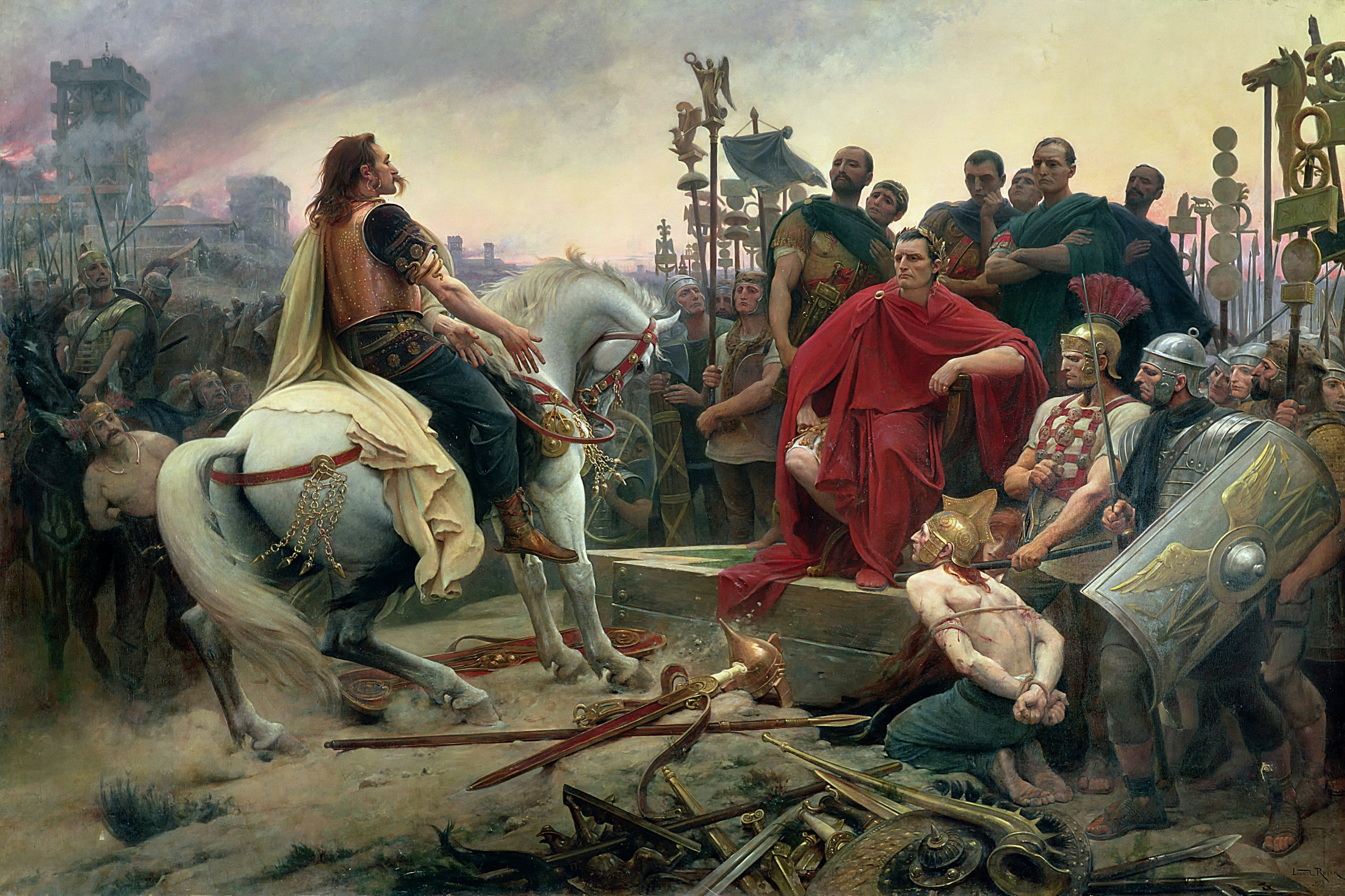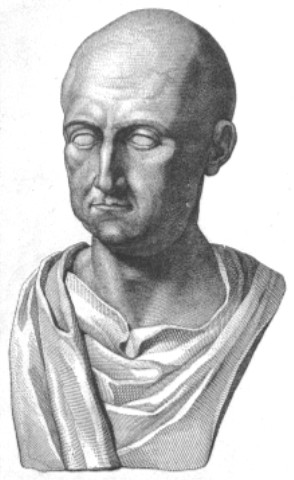|
Lucterius
Lucterius (Ancient Greek: Λυκτεριoς) was a leader of the Cadurci, a Celtic people whose territory was located around Cahors in the modern French department of Lot. In the 50s BC, the Cadurci were under the rule of the Arverni, the ''civitas'' of Vercingetorix, under whom Lucterius served during the last stages of the Gallic Wars. In his memoirs, Julius Caesar calls him a man of unsurpassed boldness. During the Gallic rebellion of 52 BC, Vercingetorix placed part of his forces under the command of Lucterius and sent him to secure the allegiance of the Ruteni, a border people. Advancing through the territory of the Nitiobriges and Gabali, he amassed an impressive number of troops and was on the point of invading the Narbonensis, the Roman province of Mediterranean Gaul, when the arrival of Caesar and his army forced him to withdraw. Lucterius remained at large after the surrender of Vercingetorix at Alesia and continued the resistance the following year in an alliance with ... [...More Info...] [...Related Items...] OR: [Wikipedia] [Google] [Baidu] |
Gaius Caninius Rebilus (consul 45 BC)
Gaius Caninius Rebilus ( 52–45 BC) was a Roman general and politician. As a reward for devoted service, Julius Caesar appointed him consul suffectus on the last day of December 45 BC. Rebilus, a novus homo of the late Republic, served with Julius Caesar throughout the Gallic Wars and the Civil Wars. He was Military tribune in Gaul in 52 BC, before becoming one of Caesar's legates in 51 BC. Gallic Wars During the later stages of the Gallic War he commanded two legions on the southern slope of the heights during the siege of Alesia, where Caesar's defences were weakest. With great difficulty, and the timely support of Titus Labienus, he withstood the last major attack on the Roman position there on October 2, 52 BC. The following year he was sent to pursue Cadurci leader Lucterius, who fled to the stronghold of Uxellodunum which Rebilus proceeded to besiege. Attempting to emulate the tactics at Alesia, he was forced to deal with repeated sorties which disrupted his attempts to ... [...More Info...] [...Related Items...] OR: [Wikipedia] [Google] [Baidu] |
Uxellodunum
Uxellodunum is an Iron Age hill fort, or ''oppidum'', located above the river Dordogne near the modern-day French village of Vayrac in the Lot department. This stronghold lay within the lands of the Cadurci tribe. According to Aulus Hirtius in his addendum to Julius Caesar's ''Commentaries on the Gallic War'', the last revolt against Rome's authority in Gaul occurred here, and was brutally punished. The ''Commentaries on the Gallic War'' describe Uxellodunum as being strongly fortified by its natural position, with a river dividing the valley below that almost surrounded the steep craggy mountain on which the citadel was built. The name apparently means "high fort"; "dun" is a Celtic word for fort, which is to be found in many place-names. Description of siege The main source of information about the siege in 51 BC is Book 8 of the ''Commentaries on the Gallic War''. The siege is also mentioned briefly by the engineer Sextus Julius Frontinus in his book '' Stratagems''. Th ... [...More Info...] [...Related Items...] OR: [Wikipedia] [Google] [Baidu] |
Gallic Wars
The Gallic Wars were waged between 58 and 50 BC by the Roman general Julius Caesar against the peoples of Gaul (present-day France, Belgium, Germany and Switzerland). Gallic, Germanic, and British tribes fought to defend their homelands against an aggressive Roman campaign. The Wars culminated in the decisive Battle of Alesia in 52 BC, in which a complete Roman victory resulted in the expansion of the Roman Republic over the whole of Gaul. Though the Gallic military was as strong as the Romans, the Gallic tribes' internal divisions eased victory for Caesar. Gallic chieftain Vercingetorix's attempt to unite the Gauls under a single banner came too late. Caesar portrayed the invasion as being a preemptive and defensive action, but historians agree that he fought the Wars primarily to boost his political career and to pay off his debts. Still, Gaul was of significant military importance to the Romans. Native tribes in the region, both Gallic and Germanic, had attac ... [...More Info...] [...Related Items...] OR: [Wikipedia] [Google] [Baidu] |
Narbonensis
Gallia Narbonensis (Latin for "Gaul of Narbonne", from its chief settlement) was a Roman province located in what is now Languedoc and Provence, in Southern France. It was also known as Provincia Nostra ("Our Province"), because it was the first Roman province north of the Alps, and as Gallia Transalpina ("Transalpine Gaul"), distinguishing it from Cisalpine Gaul in Northern Italy. It became a Roman province in the late 2nd century BC. Gallia Narbonensis was bordered by the Pyrenees Mountains on the west, the Cévennes to the north, the Alps on the east, and the Gulf of Lion on the south; the province included the majority of the Rhone catchment. The western region of Gallia Narbonensis was known as Septimania. The province was a valuable part of the Roman Empire, owing to the Greek colony of Massalia, its location between the Spanish provinces and Rome, and its financial output. Names The province of Gallia Transalpina ("Transalpine Gaul") was later renamed Gal ... [...More Info...] [...Related Items...] OR: [Wikipedia] [Google] [Baidu] |
Asterix And Obelix
''Asterix'' or ''The Adventures of Asterix'' (french: Astérix or , "Asterix the Gaul") is a ''bande dessinée'' comic book series about a village of indomitable Gaulish warriors who adventure around the world and fight the Roman Republic, with the aid of a magic potion, during the era of Julius Caesar, in an ahistorical telling of the time after the Gallic Wars. The series first appeared in the Franco-Belgian comic magazine ''Pilote'' on 29 October 1959. It was written by René Goscinny and illustrated by Albert Uderzo until Goscinny's death in 1977. Uderzo then took over the writing until 2009, when he sold the rights to publishing company Hachette; he died in 2020. In 2013, a new team consisting of Jean-Yves Ferri (script) and Didier Conrad (artwork) took over. , 39 volumes have been released, with the most recent released in October 2021. Description Asterix comics usually start with the following introduction: '' The year is 50 BC. Gaul is entirely occupied by the Roman ... [...More Info...] [...Related Items...] OR: [Wikipedia] [Google] [Baidu] |
Characters In Asterix
This is a list of characters in the ''Asterix'' comics. Main characters Asterix, Obelix and Dogmatix are the first characters with short descriptions usually listed at the beginning of each of the ''Asterix'' books (after the map of Gaul). They each have separate articles containing more information. Unless otherwise stated, this article uses the names chosen for the English translations of the books. Asterix Asterix is the main character. He is a brave, intelligent and shrewd warrior of somewhat diminutive size, who eagerly volunteers for all perilous missions. * french: Astérix (from ', meaning "asterisk", which is the typographical symbol * indicating a footnote, from the Hellenic (Greek) word ἀστήρ (''aster''), meaning a "star"). As the titular character, he is usually the star of the story. His name is usually left unchanged in translations, aside from accents and the use of local alphabets: for example, in Esperanto, Polish, Slovene, Latvian and Turkish it is '' ... [...More Info...] [...Related Items...] OR: [Wikipedia] [Google] [Baidu] |
Bituitus
Bituitus ('' fl.'' 2nd century BCE) was a king of the Arverni, a Gaulish tribe living in what is now the Auvergne region of France. The Arverni were a powerful opponent of the Roman Republic during the 3rd and 2nd centuries under the leadership of Luernius, the father of Bituitus. In 121 BCE, Bituitus was defeated by the Roman general Fabius Maximus, ending the power of the Arverni in Mediterranean Gaul, or present-day southern France. The defeat of the Arverni resulted in the establishment of the Roman province of Gallia Narbonensis. History In 121 BC, the Roman proconsul Domitius Ahenobarbus undertook a war against the Allobroges, who allied with the Arverni under Bituitus. These Gallic tribes were defeated near the town of Vindalium, the current French town of Bédarrides. After this defeat, the Allobroges and Arverni made preparations to re-enter battle with the Romans. Bituitus again took the field with a large army. Where the Isère river meets the river Rhone near curr ... [...More Info...] [...Related Items...] OR: [Wikipedia] [Google] [Baidu] |
Proconsul
A proconsul was an official of ancient Rome who acted on behalf of a consul. A proconsul was typically a former consul. The term is also used in recent history for officials with delegated authority. In the Roman Republic, military command, or ''imperium'', could be exercised constitutionally only by a consul. There were two consuls at a time, each elected to a one-year term. They could not normally serve two terms in a row. If a military campaign was in progress at the end of a consul's term, the consul in command might have his command prorogued, allowing him to continue in command. This custom allowed for continuity of command despite the high turnover of consuls. In the Roman Empire, proconsul was a title held by a civil governor and did not imply military command. In modern times, various officials with notable delegated authority have been referred to as proconsuls. Studies of leadership typically divide leaders into policymakers and subordinate administrators. The proconsu ... [...More Info...] [...Related Items...] OR: [Wikipedia] [Google] [Baidu] |
Aulus Hirtius
Aulus Hirtius (; – 43 BC) was consul of the Roman Republic in 43 BC and a writer on military subjects. He was killed during his consulship in battle against Mark Antony at the Battle of Mutina. Biography He was a legate of Julius Caesar's starting around 58 BC and served as an envoy to Pompey in 50. It was reported that Hirtius dined with Caesar, Sallust, Oppius, Balbus and Sulpicius Rufus on the night after Caesar's famous crossing over the Rubicon river into Italy on 10 January 49 BC. During Caesar's Civil War he served in Spain; he may have been a tribune in 48, and in 47 was at Antioch. He was a praetor in 46 and governor of Transalpine Gaul in 45. After Caesar's assassination in March 44, Hirtius was deeply involved in the maneuvering between parties. Having been nominated for that post by Caesar, Hirtius and Pansa became consuls in 43. Initially a supporter of Mark Antony, Hirtius was successfully lobbied by Cicero, who was a personal friend, and switched his allegia ... [...More Info...] [...Related Items...] OR: [Wikipedia] [Google] [Baidu] |
Quercy
Quercy (; oc, Carcin , locally ) is a former province of France located in the country's southwest, bounded on the north by Limousin, on the west by Périgord and Agenais, on the south by Gascony and Languedoc, and on the east by Rouergue and Auvergne. Description Quercy comprised the present-day department of Lot, the northern half of the department of Tarn-et-Garonne, and a few communities in the departments of Dordogne, Corrèze, and Aveyron. The traditional capital of Quercy is Cahors, now prefecture (capital) of Lot. The largest town of Quercy is Montauban, prefecture of Tarn-et-Garonne. However, Montauban lies at the traditional border between Quercy and Languedoc, in an area very different from the rest of Quercy, and it is closer historically and culturally to Toulouse and the rest of Languedoc, therefore it should be considered a special case, not totally part of Quercy. Also distinct from the rest of the region is the Quercy Blanc lying between Cahors and the southern ... [...More Info...] [...Related Items...] OR: [Wikipedia] [Google] [Baidu] |
Oppidum
An ''oppidum'' (plural ''oppida'') is a large fortified Iron Age settlement or town. ''Oppida'' are primarily associated with the Celtic late La Tène culture, emerging during the 2nd and 1st centuries BC, spread across Europe, stretching from Britain and Iberia in the west to the edge of the Hungarian plain in the east. These settlements continued to be used until the Romans conquered Southern and Western Europe. Many subsequently became Roman-era towns and cities, whilst others were abandoned. In regions north of the rivers Danube and Rhine, such as most of Germania, where the populations remained independent from Rome, ''oppida'' continued to be used into the 1st century AD. Definition is a Latin word meaning 'defended (fortified) administrative centre or town', originally used in reference to non-Roman towns as well as provincial towns under Roman control. The word is derived from the earlier Latin , 'enclosed space', possibly from the Proto-Indo-European , 'occupi ... [...More Info...] [...Related Items...] OR: [Wikipedia] [Google] [Baidu] |







